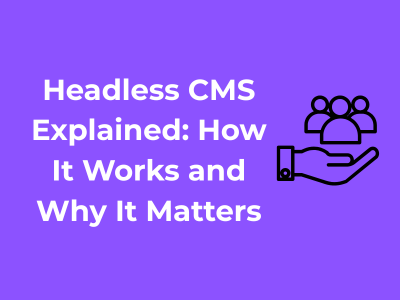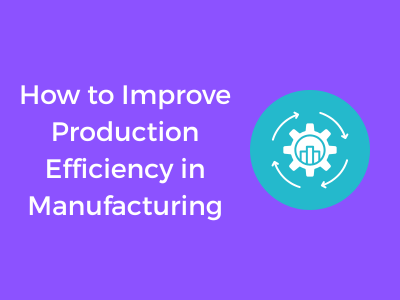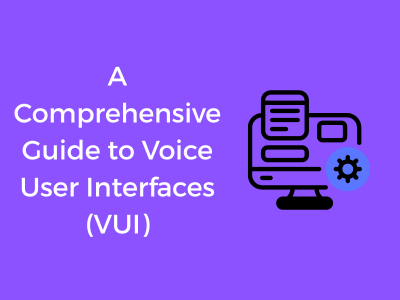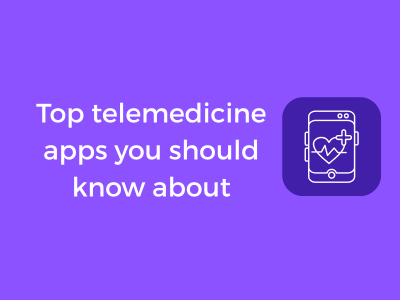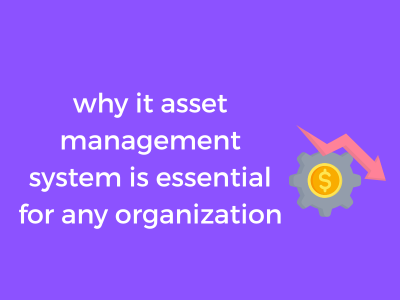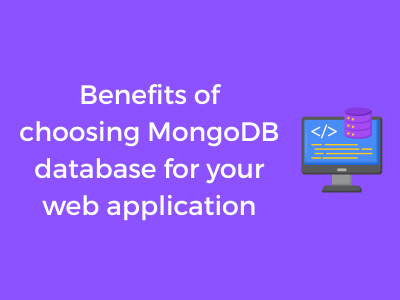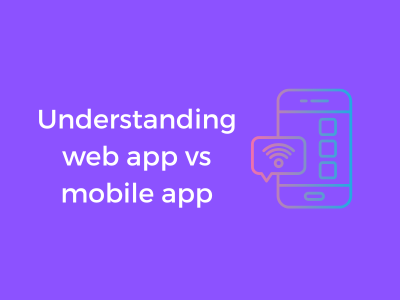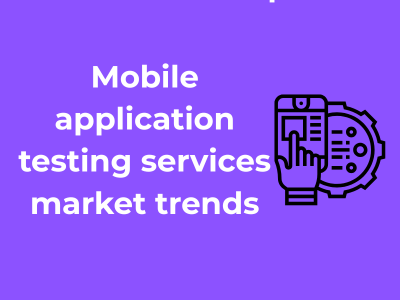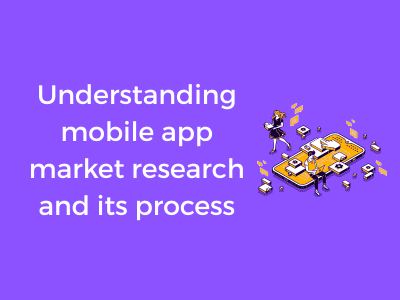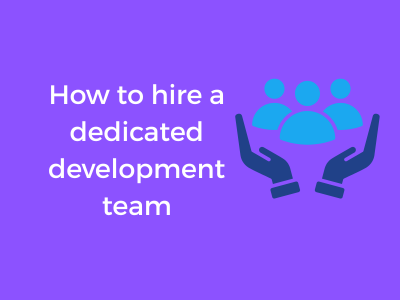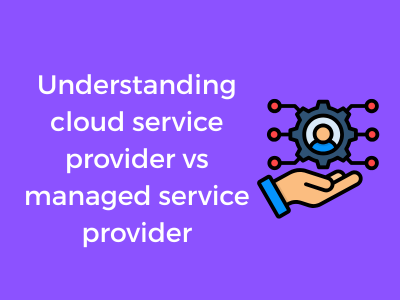Alright, let’s dive into the fascinating world of content management! At its core, a Headless CMS (Content Management System) is a modern approach to managing and delivering content. But before we go too far, let’s break it down into bite-sized pieces.
What Does “Headless” Mean?
When you hear the term “headless,” think of a CMS where the front-end (the “head”) is decoupled from the back-end. Traditionally, CMS platforms like WordPress combine both the content repository (back-end) with the means to display it (front-end). In a headless setup, this connection is severed—allowing the back-end to be just that: a flexible hub where content lives, ready to be shared anywhere.
How Does It Work?
Picture a headless CMS as a central storage unit where all your content resides. Instead of directly determining how that content appears on a website, it delivers it using APIs (Application Programming Interfaces). These APIs allow content to be pulled and presented on any platforms like websites, mobile apps, IoT devices, and more. It’s like preparing a great meal and delivering it in reusable containers to any restaurant, each of which decides how to serve it.
Core Differences from Traditional CMS
- API-First Approach: Headless CMS solutions prioritize delivering content anywhere through APIs. This makes them incredibly flexible.
- Omnichannel Capabilities: Want to publish content on your website, a smartwatch, and a giant LED screen at a sports arena? You can do it all seamlessly with a Headless CMS.
- Separation of Concerns: Developers can work independently on the front-end design while editors focus on creating content in the back-end. No stepping on each other’s toes!
Why is It Called a Game-Changer?
You might be wondering, “Why all the buzz about headless CMS?” Well, it’s simply because it’s built for the digital age. As businesses and content creators face the challenge of delivering information consistently across various devices and platforms, a headless setup is an efficient solution. No more re-creating the wheel for every platform—your content can flow freely and adapt to the presentation layer as needed.
When is a Headless CMS a Good Fit?
Headless CMS works best for businesses that need:
- A future-proof system. As technology evolves, a headless CMS ensures your content is ready for new devices and platforms automatically.
- Speed in delivering content. APIs allow for faster front-end development and content deployment.
- Scalability. The decoupled nature of a Headless CMS makes it perfect for growing companies.
Getting Started
If you’re new to the concept, don’t worry—it may sound technical, but the key takeaway here is flexibility. With a Headless CMS, you can think beyond traditional websites. Think apps, voice assistants, smart TVs, and even VR experiences! If your content strategy demands adaptability and cutting-edge delivery, then you’re already on the right path to exploring what a Headless CMS can offer.
In the next sections of this guide, we’ll dive deeper into comparisons, benefits, and challenges. For now, isn’t it exciting to imagine the possibilities?
How Traditional CMS Compares to Headless CMS
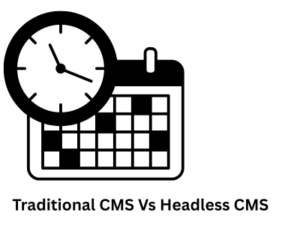
Imagine your website is a car. A traditional CMS (Content Management System) like WordPress or Joomla is like an old-school car — everything comes built together. You get the body, the engine, and all the parts in one package, but you’ve got limited flexibility on customization. On the other hand, a headless CMS is more like a modern modular car — you choose the engine, the design, and it can be as fancy as a sports car or as robust as a work truck, tailored to your specific needs!
What is a Traditional CMS?
Traditional CMS platforms have been staples in web development for decades. These systems couple the backend — where you manage your content — with the frontend — the way your site looks and operates. For example, if you’re using WordPress to write and publish blogs, the same platform will control how the blog is displayed to visitors.
- Pros: Everything is in one place. You don’t need to code; just pick a template, add your content, and hit publish!
- Cons: This tight coupling makes things tricky, especially if you want to present content across different channels (e.g., websites, apps, or kiosks).
How Does a Headless CMS Change the Game?
A headless CMS separates the backend from the frontend. Simply put, it’s called “headless” because it doesn’t concern itself with how your content looks. Its sole purpose is to store and organize content, leaving presentation entirely up to you or your developers.
- Flexibility: You can push content to multiple platforms (websites, apps, smartwatches, voice assistants) without worrying about display constraints.
- High Performance: Since the CMS isn’t tied to any frontend, developers can choose faster modern frameworks.
An Example to Put Things in Perspective
Let’s look at a restaurant. A traditional CMS is like a fixed menu — you have a standardized experience with little room for customization. A headless CMS is more like an à la carte option. Want just a snack for your mobile app? Done! Want a five-course meal for your website? No problem!
When Does Traditional CMS Fall Short?
Traditional CMS works fine for simple blogs or small businesses with straightforward needs. However, as digital experiences evolve with interactive apps, multi-device compatibility, and personalized content, the limitations of traditional CMS become glaring:
- Limited Omnichannel Support: Traditional CMS can struggle to scale across platforms simultaneously.
- Customization Challenges: Built-in themes often lack flexibility.
- Performance Issues: Tightly coupled systems can be bulky and slow.
So, Which One Should You Pick?
If you’re running a small-scale site or blog, a traditional CMS may cover your needs just fine thanks to its simplicity. But for enterprises aiming to deliver content across a broad range of devices or platforms efficiently, a headless CMS could be a game changer. Remember, with a headless approach, design and functionality are only limited by your team’s imagination and capability!
Ultimately, the decision comes down to weighing your goals. Are you looking for a simple, all-in-one tool? Or do you need the freedom and scalability to build dynamic, omnichannel experiences? Understand the difference between the two approaches, and you’ll be halfway to making a great decision for your content strategy!
Why Developers and Businesses Opt for Headless Solutions

It’s no secret that over the past few years, “headless” has become a buzzword in the tech and business communities. If you’ve been wondering why developers and businesses keep leaning toward headless solutions, you’re not alone! Let’s dig into some of the top reasons why this approach is winning hearts (and projects).
1. Flexibility to Innovate
One of the key reasons businesses and developers embrace headless CMS is its sheer flexibility. Unlike traditional systems, headless separates the front-end (what users see) from the back-end (where content is stored). This allows developers to build unique, highly customized digital experiences without being locked into specific templates or themes.
For example, if your team wants to push content not just to your website but also to mobile apps, digital kiosks, or even IoT devices, a headless CMS can make this a breeze. By exposing content via API, you have almost limitless possibilities to innovate and adapt!
2. Omnichannel Content Delivery
In today’s multi-device world, delivering content wherever your audience is has become a must. A headless CMS is designed with this in mind. You can push the same content to websites, mobile apps, smartwatches, voice assistants, or even augmented reality (AR) apps, without duplicating work.
For businesses looking to maintain a consistent brand message across multiple platforms, this is a game-changer. Say goodbye to awkward reformatting or mismatched content across channels.
3. Speed and Scalability
Speed matters. A headless CMS allows developers to leverage modern front-end tools and frameworks like React, Angular, or Vue.js to craft lightning-fast user experiences. This also often results in better SEO rankings, which businesses love.
On top of that, as your business grows, a headless system scales much easier. Whether you’re adding more traffic, new content types, or expanding to global audiences, a headless CMS can handle it all.
4. Developer Freedom
Have you ever heard developers complain about rigid frameworks or bloated systems? With a headless CMS, that frustration becomes history! Developers can work with the tools and tech stacks they love without being shackled by predefined rules of a monolithic CMS.
This freedom results in happier, more productive development teams who can push updates and features faster and more efficiently.
5. Future-Proofing
Technology evolves quickly, and businesses can’t afford to rely on a system that might become outdated. Since a headless CMS focuses solely on managing content and leaves the front-end to advancements in technology, you’re better positioned to adapt to whatever the future may bring. Whether the next frontier is virtual reality or something equally innovative, your content infrastructure will be ready to integrate.
6. Cost-Efficiency Over Time
While there’s an initial investment in setting up a headless CMS, businesses often find they save money in the long term. How? By reducing dependency on specific platforms and ensuring content doesn’t require multiple rounds of formatting or rebuilding for new channels. This streamlining cuts down operational costs enormously.
Key Features to Look for When Choosing a Headless CMS
So, you’ve decided to explore the fascinating world of headless content management systems. Congrats! But, let’s face it, picking the perfect CMS can be a bit intimidating. With countless options out there, where do you even begin? Don’t worry—I’ve got your back. Here are the key features you should absolutely consider when choosing a headless CMS that fits your project like a glove.
1. API-First Architecture
At the heart of any headless CMS is its API. A robust API-first architecture ensures seamless communication between the backend (where your content lives) and the multiple frontends where your content is displayed. Look for a CMS that offers RESTful and GraphQL APIs, as they provide flexibility and efficiency for developers to build anything from websites to mobile apps—and even IoT devices!
2. Flexibility with Frontend Frameworks
The beauty of headless CMS lies in its freedom. You’re not tied to any specific frontend technology, which is amazing—provided that the CMS you choose supports this flexibility. Whether your team prefers React, Vue, Angular, or good old HTML, ensure your CMS integrates smoothly and leaves room for experimentation down the road.
3. Multi-Channel Publishing
We live in a multi-device, multi-platform world, right? A good headless CMS should make it easy to create, manage, and distribute content across websites, mobile apps, voice-enabled devices (hello, Alexa!), and even wearable tech. If omnichannel capabilities aren’t on the table, that CMS may not be the one for you.
4. User-Friendly Interface
Wait, isn’t headless CMS meant for developers? Yes, but content creators are just as vital in the process. A well-designed, intuitive interface allows both technical and non-technical users to collaborate efficiently. Think visual editors, drag-and-drop tools, and clear workflows.
5. Strong Content Modeling Capabilities
No two content strategies are the same. Whatever you’re building, your CMS needs to adapt to your unique requirements. Look for one with customizable content types and fields. Bonus points if it lets you define relationships between content entities—this will make your structure both logical and scalable as your needs evolve.
6. Scalability and Performance
If your brand hits the jackpot and your website traffic skyrockets, can your CMS handle the load? Ensure your headless CMS can scale alongside your growth, offering fast and reliable performance regardless of how much content you host or how many users you serve.
7. Integration Ecosystem
No CMS operates in a vacuum. A great headless CMS will integrate with your favorite tools—think CRM systems, marketing automation platforms, analytics solutions, e-commerce software, and more. This ensures smooth workflows and less time spent toggling between systems.
8. Security Measures
Safety first! When you’re managing and sharing data across multiple channels, robust security features are non-negotiable. Keep an eye out for regular software updates, encryption protocols, user authentication, and role-based access control.
9. Community and Support
Finally, don’t underestimate the value of helpful, responsive support and a thriving user community. It makes a world of difference when challenges arise. Check if the CMS offers forums, tutorials, and extensive documentation to empower your team.
Popular Use Cases of Headless CMS in Different Industries
Headless CMSes are making waves in industries across the board. With their flexibility and ability to separate content management from content delivery, they’re becoming the go-to tool for creating amazing customer experiences. Let’s dive into how different industries are harnessing this technology and why it’s such a game-changer.
E-Commerce: A Seamless Shopping Experience
For the e-commerce world, a headless CMS is a superstar. Why? Because it allows businesses to deliver a consistent shopping experience across all devices—be it websites, mobile apps, or even in-store kiosks. Imagine browsing a clothing store’s app, making your selection, and then seamlessly continuing your experience later on their website. All of this is possible because a headless CMS enables centralized content delivery to multiple platforms.
Big e-commerce players also appreciate how headless helps with scalability. Black Friday or a special sale? No problem! A headless setup ensures smooth performance, no matter the traffic spikes. Plus, with personalized content becoming essential, brands can easily serve tailored offers without rebuilding the entire system.
Entertainment and Media: Delivering Multi-Channel Content
From OTT services (think Netflix and Hulu) to online news platforms, entertainment and media companies love headless CMS for its agility. These industries rely heavily on delivering up-to-date, engaging content that works across platforms, such as smart TVs, apps, and websites.
For instance, a news organization can use a headless CMS to produce a breaking news story once and have it automatically adapt and appear across their mobile app, website, and social media channels. The ability to “write once, distribute everywhere” is a winning formula for staying competitive in this fast-paced industry.
Travel and Hospitality: Building Engaging Customer Journeys
The travel and hospitality sector is all about customer experience. From booking a flight to checking into a hotel, customers want a seamless and personalized journey. Headless CMS makes this possible.
With a headless system, airlines, hotels, and travel agencies can push consistent content—like promotions, itineraries, and recommendations—across platforms like mobile apps, websites, and email campaigns. It helps create a unified brand presence and allows businesses to efficiently communicate with guests at every stage of their journey.
Healthcare: Secure, Accessible Information
In healthcare, a headless CMS can offer secure and adaptable access to vital information, such as patient forms, appointment booking, and health guides. Health providers can use it to bring important updates to their patients across websites, apps, and wearable devices—with all the cross-platform benefits while keeping sensitive data safe.
This is particularly beneficial in telehealth services where consistent, reliable interfaces can make or break the patient’s experience during digital consultations.
Education: Learning Made Flexible
For educational institutions, headless CMS powers resourceful learning platforms. Schools and universities can use it to distribute courses, videos, and supplementary material to websites, mobile devices, and even VR setups. This makes remote learning more effective and ensures accessibility for diverse student needs.
Challenges and Solutions When Implementing a Headless CMS
So, you’re thinking about implementing a headless CMS—or maybe you’ve already taken the leap. Congratulations! It’s an exciting step toward greater flexibility and scalability for your content strategy. But like any technology, headless CMS isn’t without its hiccups. Don’t worry, though—we’ve got you covered. Let’s chat about some challenges you might face during implementation and, more importantly, how to overcome them.
Understanding the Learning Curve
One of the first challenges many teams encounter is the learning curve. Unlike traditional CMS platforms where everything from content creation to design happens in one place, headless CMS requires you to handle content separately from its presentation. For development teams used to working with monolithic systems, it can feel like stepping into uncharted waters. But don’t stress—here’s what you can do:
- Start with training: Give your team time and resources to learn the ins and outs of headless CMS. Many platforms offer free tutorials, documentation, and support to get you started.
- Work with small projects: Begin with less complex projects to build confidence before diving into enterprise-wide migrations.
- Choose a developer-friendly CMS: Opt for a platform that offers helpful APIs, SDKs, and great documentation so your team can hit the ground running.
Integration Can Be Tricky
Another challenge? Getting all your systems to play nice with your headless CMS. Since a headless CMS focuses solely on managing content, you’ll need to integrate it with other tools for front-end delivery, eCommerce platforms, analytics, etc. This modular approach can sometimes cause a few headaches.
Solution: Plan integrations from the beginning! When choosing a headless CMS, scrutinize its API capabilities and ensure it supports your existing stack. Some platforms even offer pre-built integrations to make this process smoother. Also, keep documentation handy for third-party tools you’ll connect to.
Balancing Customization and Complexity
Headless CMS is amazing for tailored solutions, but with great power comes great responsibility—or in this case, complexity. The freedom to decouple content from its presentation can sometimes lead to overly complex setups that are hard to maintain.
Solution:
- Keep it simple: Focus on your core needs before adding advanced customization. You can always expand later.
- Standardize processes: Create reusable templates and establish clear documentation for how content should be structured and delivered across platforms.
Lack of In-House Expertise
If your team hasn’t worked with a headless CMS before, it’s possible you’ll lack the technical expertise to set it up and maintain it effectively. Not every team has experts in APIs, front-end frameworks, and content modeling on hand.
Solution: Bring in external support. Whether it’s consulting with specialists, hiring a headless CMS expert, or leveraging the vendor’s customer service, there’s no shame in seeking help. Many headless CMS providers also come with robust support communities where you can share challenges and get advice.
Content Workflow Management
Now, let’s talk about content workflows. Traditional CMS platforms often come with built-in tools for collaboration, versioning, and publishing timelines. With headless CMS, these features might not be as comprehensive—or may require additional setup.
Solution: Evaluate your CMS carefully. Look for workflow features or integrations that streamline collaboration, and establish clear processes for tasks like content approval, revision history, and publishing schedules.
Future Trends in Content Management and the Role of Headless CMS
Ah, the future—it’s always exciting to talk about where we’re headed, especially in the fast-evolving world of content management. If you’ve been keeping an eye on Headless CMS developments, you’ve probably noticed how it’s transforming the way businesses and developers work with content. But what does the future hold, and how will Headless CMS shape the content landscape? Let’s dive in!
1. The Rise of Omnichannel Experiences
We live in an era where consumers expect to interact seamlessly across multiple platforms—websites, apps, wearables, smart TVs, and even voice assistants. The Headless CMS, with its API-driven structure, is perfectly suited to deliver content to all of these touchpoints. In the coming years, expect a surge in businesses adopting Headless CMS to create cohesive and personalized omnichannel experiences.
2. AI and Automation Integration
Artificial Intelligence (AI) is becoming a major player across all industries, and content management is no exception. In the near future, we’ll see Headless CMS platforms incorporating smarter AI-driven tools. From automating content tagging to personalizing content delivery based on user behavior, AI will supercharge what Headless CMS can achieve.
3. The Growth of Microservices Architecture
As businesses lean into flexible and scalable solutions, microservices will continue to dominate software architecture. Pairing a Headless CMS with microservices allows developers to modularly build applications using “best-of-breed” tools. This approach reduces dependency on monolithic systems, fostering innovation and agility.
4. Enhanced Developer-Focused Tools
Developers are the backbone of Headless CMS adoption, so tools that cater to their needs will continue to evolve. Expect more developer-friendly enhancements, such as improved SDKs, GraphQL support, and CLI tools. These advancements will make Headless CMS platforms even faster and easier to integrate into multi-platform systems.
5. Shift Towards Content Personalization
Users crave tailored experiences, and content personalization is becoming the norm. Headless CMS providers will start offering advanced features that make personalizing content for individual users effortless. Think dynamic content delivery that adjusts based on user location, behavior, or even the time of day. To stay competitive, companies will embrace these adaptive content capabilities.
6. Sustainability and Green Tech Practices
This might surprise you, but as the conversation around environmental concerns grows, businesses will start evaluating the carbon footprint of their digital operations. Headless CMS systems, which support streamlined and cloud-forward approaches, are greener alternatives to traditional solutions. This may lead to a new trend: “environmentally-conscious content management.”
7. Focus on No-Code and Low-Code Options
While developers love the freedom a Headless CMS offers, not everyone who manages content is a coder. This is why platforms are increasingly adding no-code or low-code features to empower marketers, content creators, and other non-technical users. The future will bring better UX for non-techies while still maintaining the robust flexibility that developers crave.

